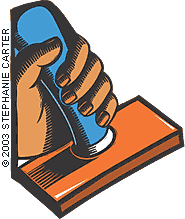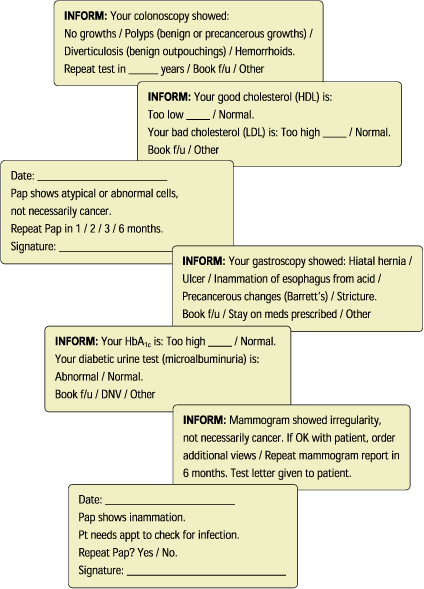
Simple interventions, such as using self-inking stamps to document lab results, can make your charts more legible, consistent and complete in less time.
Fam Pract Manag. 2003;10(4):51-52

Proponents of electronic medical records (EMRs) often argue that paper-based records are obsolete in today’s medical marketplace. But for the majority of practicing physicians, paper-based records are a reality. Our clinic recently explored the option of implementing EMRs and, although we believe in their value, could not yet afford the hefty price tag. So instead of purchasing an EMR, we searched for opportunities to make our paper records more efficient. In particular, we looked to improve the reporting and documentation of lab and diagnostic test results.
Family physicians must track and sift through large volumes of lab and diagnostic reports every day. Added to that exercise are the burdens of getting these results to patients in language they can understand and then documenting all actions in the chart. In my practice, my staff is responsible for contacting patients with their results or with further instructions after I have reviewed their reports and communicated my findings in the chart. It was at this point in the process that I found myself repeating the same messages to my staff (e.g., “Inform patient that his HDL is too high. Book follow-up appointment”). Then, it occurred to me: Most EMRs have a feature that allows you to create standardized messages and then, when you need them, input them with just a few keystrokes. I could create a low-tech, low-cost version for my paper records by simply using self-inking stamps to document lab results.
Stamping out inefficiency
Here’s how we went about it: My staff and I developed stamps for commonly reported lab and diagnostic test results (see the stamped text). We wanted the messages on these stamps to explain the results in an understandable way yet be short and concise. The stamps’ messages allow the physician to circle specific responses (e.g. “Your colonoscopy showed: No growths / Polyps / Diverticulosis / Hemorrhoids) or write in the patient’s actual results (e.g., “Your HbA1c is: Too High ____ / Normal”). We ordered the stamps from our purchasing department at a cost of about $30 each, placed them in a convenient location at my work station and then started using them. It was that simple.
STAMPED MESSAGES
The stamped messages shown here are among those the author uses to document her review of patients’ test results and communicate orders to staff. After stamping the selected message, she simply circles the appropriate findings and inputs values where indicated.

To assess whether the stamps were effective, we measured and compared the time required to use the stamps versus the time required to write a message based on the lab or diagnostic report. By using the stamps, I saved an average of two minutes per test result, or about one hour per week. This time savings more than paid for the cost of the stamps. In addition, there were other lessons learned.
Even if the stamps had been shown to offer no time savings, they would still be valuable in that they help standardize the documentation and reporting of lab results. When physicians handwrite their findings and instructions, there is room for error. We may omit a piece of information, simply write the wrong message or write illegibly, leading to errors if our staff misinterpret our orders. Stamped messages allow physicians to standardize their responses in the patient record, which improves quality by making the charts more readable and more accurate. This produces happier support staff and patients. It also produces happier physicians, as their paperwork burdens become lighter.
Of course, using stamps to improve the reporting and documentation of test results is just a small piece of the puzzle. Other areas of the process could also be improved, such as using e-mail and automated telephone results-reporting systems to reduce the amount of time spent communicating results to patients. There are also many other opportunities for improving the paper medical record. What our small intervention demonstrates is that by borrowing some of the features of EMRs and applying them on a low-tech scale, physicians can learn to work smarter, not harder, and keep costs down.